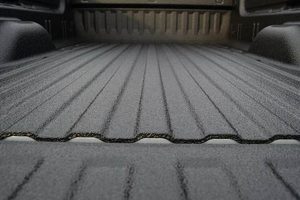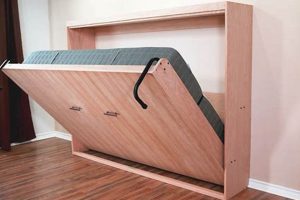The practice of creating homemade solutions to deter bed bugs represents a proactive approach to pest management. This typically involves utilizing readily available household ingredients believed to possess repellent qualities, such as essential oils, vinegar, or certain spices, and formulating them into sprays or topical treatments. An example includes mixing tea tree oil with water to create a spray applied to mattresses and bedding.
The significance of this method lies in its potential accessibility and cost-effectiveness, particularly for individuals seeking alternatives to commercially available insecticides. Historically, reliance on natural remedies for pest control predates modern chemical solutions. The benefits can extend to reduced exposure to synthetic chemicals and the ability to tailor solutions based on individual sensitivities or preferences. However, it is important to note that the efficacy of homemade deterrents can vary.
The following sections will explore specific ingredients commonly used in crafting these solutions, discuss best practices for application, and address the limitations and considerations associated with relying solely on these methods for bed bug eradication.
DIY Bed Bug Repellent
The following strategies outline recommended approaches to maximizing the potential effectiveness of homemade bed bug deterrents. Emphasis is placed on proper preparation, application, and maintenance to improve the likelihood of success.
Tip 1: Ingredient Selection: Research specific natural substances believed to possess repellent properties. Examples include neem oil, lavender oil, and clove oil. Ensure the chosen substance is safe for use around individuals and pets.
Tip 2: Proper Dilution: Adhere to recommended dilution ratios when mixing ingredients. Essential oils, for example, should be diluted in a carrier oil (such as almond or grapeseed oil) or water to avoid skin irritation and potential damage to fabrics. A common ratio is 5-10 drops of essential oil per ounce of carrier.
Tip 3: Strategic Application: Focus application on areas where bed bugs are likely to harbor, including mattress seams, bed frames, headboards, and surrounding furniture. Apply deterrents lightly and evenly, avoiding saturation that could damage fabrics or create a breeding ground for mold.
Tip 4: Regular Reapplication: Homemade deterrents typically require more frequent reapplication than commercial insecticides. Reapply every few days or after laundering bedding. Consistency is crucial for maintaining repellent effects.
Tip 5: Complementary Measures: Integrated pest management is crucial. Employ vacuuming, steam cleaning, and encasing mattresses and box springs in protective covers to supplement the effects of repellents.
Tip 6: Monitor for Effectiveness: Regularly inspect treated areas for signs of bed bug activity. If infestation persists despite consistent application, consider seeking professional pest control assistance. DIY methods may be insufficient for established infestations.
Tip 7: Allergen Awareness: Be cognizant of potential allergic reactions to ingredients utilized in homemade deterrents. Conduct a patch test on a small area of skin before widespread application. Discontinue use if irritation occurs.
These strategies highlight the importance of careful planning and consistent execution when employing do-it-yourself repellents. While these methods may offer some degree of deterrent, their effectiveness can be limited.
Consider this information as a prelude to understanding the comprehensive approach required for effective bed bug management, which may necessitate professional intervention.
1. Ingredient safety
Ingredient safety forms a crucial nexus within the context of “bed bug repellent diy.” The efficacy of any homemade repellent hinges not only on its ability to deter or eliminate bed bugs but also on the absence of adverse effects on human health and the environment. A direct causal relationship exists: improper ingredient selection or handling can lead to skin irritation, respiratory issues, or even more severe health consequences. For example, undiluted essential oils, while touted for their repellent properties, can cause severe skin burns or allergic reactions if applied directly. Therefore, thorough research into the potential risks associated with each ingredient is paramount.
The practical significance of understanding ingredient safety extends beyond immediate health concerns. The long-term impact of repeated exposure to certain substances, even in diluted form, remains a subject of ongoing investigation. Furthermore, the use of flammable substances in a “bed bug repellent diy” context presents a fire hazard. One instance involved individuals mixing highly concentrated alcohol solutions, leading to accidental ignition and property damage. This underscores the need for adherence to established safety guidelines and the use of inherently non-flammable or appropriately diluted components. Moreover, consideration must be given to the potential for cross-contamination and the proper disposal of unused repellent mixtures to minimize environmental impact.
In conclusion, ingredient safety is not merely a peripheral consideration but rather an integral aspect of “bed bug repellent diy.” Careful selection, proper handling, and a comprehensive understanding of potential risks are essential to mitigate negative health and environmental outcomes. While the allure of homemade solutions lies in their perceived naturalness and cost-effectiveness, a disregard for safety protocols can negate these benefits and result in unintended consequences. Therefore, a thorough evaluation of ingredient safety should precede any attempt at creating homemade bed bug repellents.
2. Dilution accuracy
Dilution accuracy is a critical component within the realm of “bed bug repellent diy” because it directly influences both the efficacy and the safety of the resulting solution. An improper dilution can render the repellent ineffective, allowing the bed bug infestation to persist. Conversely, an overly concentrated solution may pose significant health risks to occupants and damage treated surfaces. A direct causal relationship exists: deviations from recommended dilution ratios often result in either inefficacy or harm. For example, exceeding the recommended concentration of certain essential oils can lead to skin irritation, allergic reactions, or respiratory distress, effectively undermining the intended benefits of a natural repellent.
The practical significance of dilution accuracy extends to the preservation of treated materials. Excessive concentrations of ingredients like vinegar or alcohol can damage fabrics, wood finishes, and other surfaces commonly found in bedrooms. This necessitates a meticulous approach to measuring and mixing ingredients, typically involving the use of calibrated measuring tools. Furthermore, variations in the purity or concentration of raw ingredients introduce a degree of uncertainty that requires careful consideration. For instance, essential oils may vary in potency depending on the source and extraction method, potentially necessitating adjustments to recommended dilution ratios. Documented cases exist of individuals experiencing adverse reactions after using homemade repellents where dilution instructions were either absent or inaccurately followed.
In conclusion, dilution accuracy is not merely a technical detail in “bed bug repellent diy,” but a fundamental determinant of both its success and safety. The challenges inherent in ensuring accurate dilutions, particularly given the variability of raw materials and the potential for human error, underscore the importance of rigorous adherence to established guidelines and a cautious approach to experimentation. Effective and safe home-based bed bug deterrents rely heavily on precise dilution practices, highlighting their critical role in achieving the desired outcome.
3. Application frequency
Application frequency is a crucial variable influencing the overall effectiveness of “bed bug repellent diy” solutions. The persistence of the repellent effect directly correlates with how often the substance is applied to affected areas. Understanding this relationship is paramount to achieving any degree of success in deterring bed bugs using homemade formulations.
- Volatility of Ingredients
Many ingredients utilized in homemade repellents, such as essential oils, possess high volatility. This means they evaporate relatively quickly, leading to a diminished repellent effect over time. Therefore, frequent reapplication is necessary to maintain a consistent concentration of the active ingredient in the treated environment. For example, a lavender oil-based spray might initially deter bed bugs but will lose its efficacy within a few days due to evaporation, necessitating routine reapplication.
- Degradation of Active Compounds
Exposure to light, air, and temperature fluctuations can degrade the active compounds in some homemade repellents, reducing their potency. Sunlight, in particular, can break down organic molecules, lessening their repellent properties. Regular application mitigates this degradation by continuously replenishing the active ingredients. As an illustration, a lemon eucalyptus oil repellent left exposed to direct sunlight might degrade more rapidly, requiring more frequent applications than one stored in a dark environment.
- Bed Bug Life Cycle and Behavior
Bed bugs exhibit nocturnal feeding habits and hide in cracks and crevices during the day. Consistent application of a repellent ensures that a sufficient concentration of the deterrent is present when bed bugs are most active. Moreover, bed bug eggs are resistant to many repellents; therefore, repeated applications are necessary to target newly hatched nymphs. A single application might deter adult bed bugs but fail to prevent an infestation from continuing due to hatching eggs.
- Wash-Off and Wear
Repellents applied to bedding, mattresses, and furniture can be rubbed off or washed away through normal use or laundering. Regular cleaning and contact with surfaces can diminish the repellent’s effectiveness. Therefore, it’s crucial to reapply the solution after laundering bedding or cleaning treated areas. The simple act of sleeping on a treated mattress can reduce the concentration of the repellent over time, necessitating periodic reapplication to maintain a deterrent effect.
The relationship between application frequency and the overall success of “bed bug repellent diy” is undeniable. The ephemeral nature of many homemade repellent ingredients, coupled with the bed bug’s behavior and environmental factors, necessitates a diligent and consistent application schedule. Failure to maintain an appropriate frequency can render the entire effort ineffective, highlighting the significance of understanding and adhering to recommended application protocols.
4. Targeted areas
Strategic application within “bed bug repellent diy” is paramount; generalized spraying lacks efficacy. Precise targeting of areas where bed bugs harbor directly influences the success of any homemade deterrent strategy.
- Mattress Seams and Tufts
Mattress seams and tufts offer ideal hiding places for bed bugs. The fabric provides shelter, and the proximity to a blood source allows for convenient feeding. Applications to these areas should be thorough, ensuring penetration into crevices. However, avoid saturation to prevent mold growth. Failure to treat these areas allows bed bugs to persist, negating the effects of repellent applied elsewhere.
- Bed Frame Joints and Cracks
Wooden and metal bed frames often possess joints, cracks, and screw holes that serve as harborage points. Bed bugs can congregate within these areas, venturing out to feed. Spraying or applying repellent directly into these spaces is essential. Use a small brush or nozzle to ensure the solution reaches deep within the crevices. Neglecting these areas constitutes a critical oversight in bed bug control.
- Baseboards and Carpeting Edges
Baseboards and the edges of carpeting provide concealed pathways for bed bug movement and potential hiding spots, especially near beds. Repellents should be applied along these edges to disrupt movement and prevent harborage. Pay particular attention to areas where carpeting meets walls. Omission of these areas can create a refuge for bed bugs, limiting the overall effectiveness of the treatment.
- Upholstered Furniture and Headboards
Upholstered furniture, particularly headboards, can house bed bugs. The fabric provides ample hiding places, and the proximity to sleeping individuals makes them attractive harborage sites. Carefully apply repellents to seams, folds, and crevices within the upholstery. Thorough vacuuming before application can improve penetration and effectiveness. Unaddressed upholstered items act as reservoirs for bed bugs, rendering other repellent measures less effective.
The success of “bed bug repellent diy” is significantly determined by the precision with which treatments target known or suspected harborage areas. Failure to comprehensively address these specific locations results in a reduced likelihood of eliminating the infestation. The strategic deployment of repellents to these zones is not merely an optional step, but a fundamental requirement for effective bed bug management.
5. Effectiveness monitoring
Effectiveness monitoring constitutes an indispensable phase in the “bed bug repellent diy” process. The application of homemade solutions without subsequent evaluation of their impact can lead to a false sense of security and allow an infestation to persist or worsen. Accurate monitoring provides the data necessary to determine the efficacy of the chosen repellent and to adjust strategies accordingly.
- Visual Inspections
Visual inspections involve a systematic examination of potential bed bug harborage sites for live insects, shed skins, or fecal matter. These inspections should be conducted regularly and methodically, focusing on mattress seams, bed frame crevices, and other likely hiding places. The absence of these signs following repellent application suggests potential effectiveness, while their continued presence indicates the need for alternative measures. An example includes finding a decrease in fecal spotting on bedding after several applications, suggesting a reduction in bed bug activity.
- Bite Rate Analysis
Bite rate analysis entails tracking the frequency and severity of bite marks on occupants after repellent application. A reduction in bite occurrences suggests that the repellent is providing some degree of protection. However, this method is subjective and can be influenced by individual sensitivity and delayed reactions. A person experiencing fewer bites per week after implementing a “bed bug repellent diy” strategy would indicate some level of success, though not necessarily complete eradication.
- Use of Interceptor Traps
Interceptor traps, placed under bedposts, can capture bed bugs attempting to climb onto the bed. Monitoring the number of bed bugs caught in these traps provides a quantitative measure of infestation levels. A decline in capture rates after repellent application suggests a decrease in bed bug activity. For example, a trap capturing ten bed bugs per week before treatment and only one per week after indicates a significant reduction in bed bug movement.
- Professional Verification
While DIY methods may offer initial relief, professional verification provides an objective assessment of infestation levels and the effectiveness of implemented strategies. Pest control professionals possess the expertise and equipment to accurately assess bed bug populations and identify potential harborage sites missed during visual inspections. A professional inspection can confirm the eradication of bed bugs or highlight the need for more aggressive treatment options. If DIY methods prove insufficient, a professional assessment is essential to prevent further infestation.
The insights gained through diligent effectiveness monitoring guide the refinement of “bed bug repellent diy” strategies. Without continuous evaluation, reliance on these methods becomes speculative, potentially delaying effective intervention and allowing infestations to escalate. The integration of monitoring techniques, ranging from visual inspections to professional assessments, ensures a data-driven approach to bed bug management, maximizing the likelihood of successful eradication.
6. Integrated approach
An integrated approach forms a critical foundation for effective “bed bug repellent diy.” Sole reliance on homemade repellents often proves inadequate due to bed bugs’ resilience and cryptic behavior. The integration of various control methods enhances the likelihood of successful eradication. A repellent may deter bed bugs from specific areas, but without addressing their harborage sites or preventing re-introduction, the infestation is likely to persist. For example, applying a DIY repellent to a mattress without simultaneously vacuuming the surrounding area and encasing the mattress in a protective cover offers only temporary relief. The cause-and-effect relationship is clear: a fragmented approach yields limited results, while a comprehensive strategy maximizes efficacy.
The practical application of this integrated approach involves several key steps. Thorough inspection of the infested area is crucial to identify all potential harborage sites. This includes mattresses, bed frames, headboards, baseboards, and any nearby furniture. Vacuuming is essential to remove bed bugs and their eggs. Bedding should be washed in hot water and dried on high heat to kill any remaining bed bugs. Mattress encasements prevent bed bugs from escaping or infesting the mattress. Finally, the DIY repellent should be applied to targeted areas, as described previously. An illustration of this approach is seen in cases where homeowners, initially relying solely on tea tree oil sprays, experienced limited success until they implemented mattress encasements and consistent vacuuming, at which point the infestation began to subside.
In conclusion, the success of “bed bug repellent diy” hinges on its integration into a broader pest management strategy. While homemade repellents can play a role in deterring bed bugs, they are most effective when combined with thorough cleaning, physical barriers, and ongoing monitoring. The challenges associated with complete eradication using DIY methods alone underscore the importance of this integrated approach. Embracing this comprehensive strategy significantly increases the chances of eliminating bed bugs and preventing future infestations.
7. Cost efficiency
Cost efficiency is a primary motivator for individuals exploring “bed bug repellent diy” solutions. The financial implications of professional pest control services often prompt homeowners to seek more affordable alternatives, making homemade repellents an appealing option.
- Reduced Material Expenses
DIY approaches typically involve readily available household ingredients or inexpensive components, minimizing material expenses compared to purchasing commercial insecticides. Common examples include vinegar, essential oils, and baking soda, which are often already present in households. This can result in significant cost savings, particularly for initial treatments. However, the cost-effectiveness diminishes if repeated applications and ingredient experimentation become necessary due to inefficacy.
- Elimination of Professional Service Fees
Engaging professional pest control services involves fees for inspection, treatment, and follow-up visits. These costs can quickly escalate, especially for severe infestations or recurring treatments. DIY methods eliminate these service fees entirely, providing a seemingly budget-friendly alternative. However, the long-term cost-effectiveness depends on the success of the DIY approach. If professional intervention becomes necessary after unsuccessful DIY attempts, the overall cost may exceed the initial expense of professional services.
- Potential for Waste and Inefficacy
While the initial investment in materials may be lower, the overall cost efficiency of “bed bug repellent diy” is influenced by the potential for wasted ingredients and ineffective treatments. Experimentation with different recipes and application methods may lead to discarded batches and prolonged infestations. This not only increases material costs but also delays effective treatment, potentially exacerbating the problem. In contrast, professional pest control services often offer guarantees of efficacy, mitigating the risk of wasted expenses.
- Hidden Costs and Time Investment
DIY methods often involve hidden costs, such as the time invested in research, preparation, and application. Effective bed bug control requires meticulous attention to detail and repeated treatments, demanding a significant time commitment. This time investment has an economic value, which must be considered when evaluating the overall cost efficiency of DIY approaches. Furthermore, potential health risks associated with improper use of ingredients may result in medical expenses, offsetting any initial cost savings.
The perceived cost efficiency of “bed bug repellent diy” must be weighed against the potential for wasted resources, ineffective treatments, and the value of time invested. While DIY methods can offer an initial cost advantage, their long-term economic benefits depend on their success and the absence of unforeseen complications. A comprehensive cost-benefit analysis, considering both direct and indirect expenses, is essential when evaluating the viability of DIY bed bug control solutions.
Frequently Asked Questions Regarding DIY Bed Bug Repellents
The following questions address common concerns and misconceptions associated with creating homemade bed bug deterrents. The information provided aims to offer clarity and guidance based on current understanding and best practices.
Question 1: Is “bed bug repellent diy” an effective substitute for professional pest control?
While homemade solutions may offer a degree of temporary relief or deterrence, they are generally not considered a complete substitute for professional pest control services. Established infestations often require specialized equipment, insecticides, and expertise to achieve eradication.
Question 2: What are the safest ingredients to use in a “bed bug repellent diy” formulation?
Relatively safe ingredients often cited include diluted essential oils (such as lavender, tea tree, or eucalyptus), diatomaceous earth (food grade), and certain herbal infusions. However, it is crucial to conduct thorough research and perform patch tests to assess individual sensitivities before widespread application.
Question 3: How frequently should “bed bug repellent diy” solutions be applied?
The optimal frequency of application depends on the volatility of the ingredients and the severity of the infestation. Generally, reapplication every few days is recommended, particularly after laundering bedding or cleaning treated areas. Regular monitoring is crucial to assess ongoing effectiveness.
Question 4: Can “bed bug repellent diy” solutions eliminate bed bug eggs?
Most homemade repellents are primarily effective against adult bed bugs and nymphs, offering limited efficacy against bed bug eggs. A comprehensive approach, including vacuuming, steaming, and consistent reapplication, is necessary to target newly hatched nymphs.
Question 5: What are the potential risks associated with “bed bug repellent diy”?
Potential risks include allergic reactions to ingredients, skin irritation from improper dilution, respiratory issues from aerosolized solutions, and ineffectiveness leading to prolonged infestations. Thorough research, proper handling, and careful application are essential to minimize these risks.
Question 6: How can one determine if “bed bug repellent diy” is working?
Effectiveness can be assessed through regular visual inspections for live bed bugs or fecal matter, monitoring bite rates, and utilizing interceptor traps under bedposts. A significant reduction in these indicators suggests a positive impact, while their continued presence indicates the need for alternative strategies.
In summary, while “bed bug repellent diy” can serve as a component of an integrated pest management strategy, it is crucial to approach these methods with caution, diligence, and a realistic understanding of their limitations. Professional consultation may be necessary for severe or persistent infestations.
This information should be considered as a starting point for further research and consultation with reliable sources before implementing any DIY bed bug control measures.
Conclusion
This exploration of “bed bug repellent diy” underscores the complexity of home-based pest management. The efficacy hinges on a confluence of factors: meticulous ingredient selection, precise dilution, targeted application, consistent monitoring, and integration with other control methods. While the allure of cost-effectiveness and natural ingredients is undeniable, the limitations and potential risks associated with relying solely on do-it-yourself solutions must be acknowledged. The information presented highlights the importance of informed decision-making and the potential need for professional intervention.
Ultimately, the prudent approach involves a comprehensive assessment of the infestation’s severity, a realistic understanding of the capabilities and limitations of “bed bug repellent diy,” and a willingness to seek professional assistance when necessary. Effective bed bug management demands a data-driven, adaptable strategy, prioritizing both safety and efficacy. Continuing research and responsible application remain paramount in mitigating the impact of these persistent pests.


![DIY Wood Truck Bed: Build a Custom Wooden Bed [Guide] The DIY Hub: Creative Crafts, Repairs & Life Hacks DIY Wood Truck Bed: Build a Custom Wooden Bed [Guide] | The DIY Hub: Creative Crafts, Repairs & Life Hacks](https://craftingdiycenter.com/wp-content/uploads/2025/07/th-2390-300x200.jpg)




